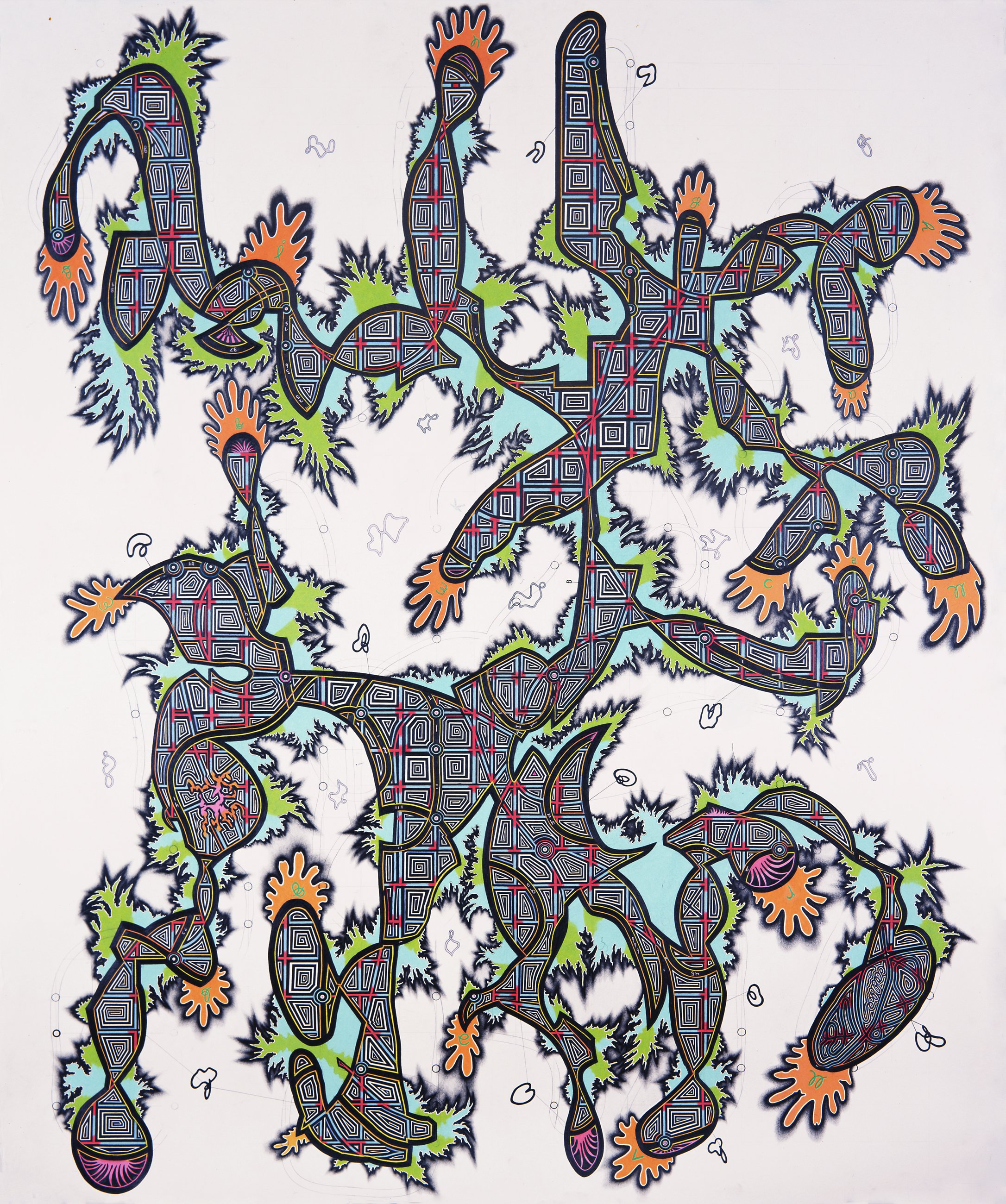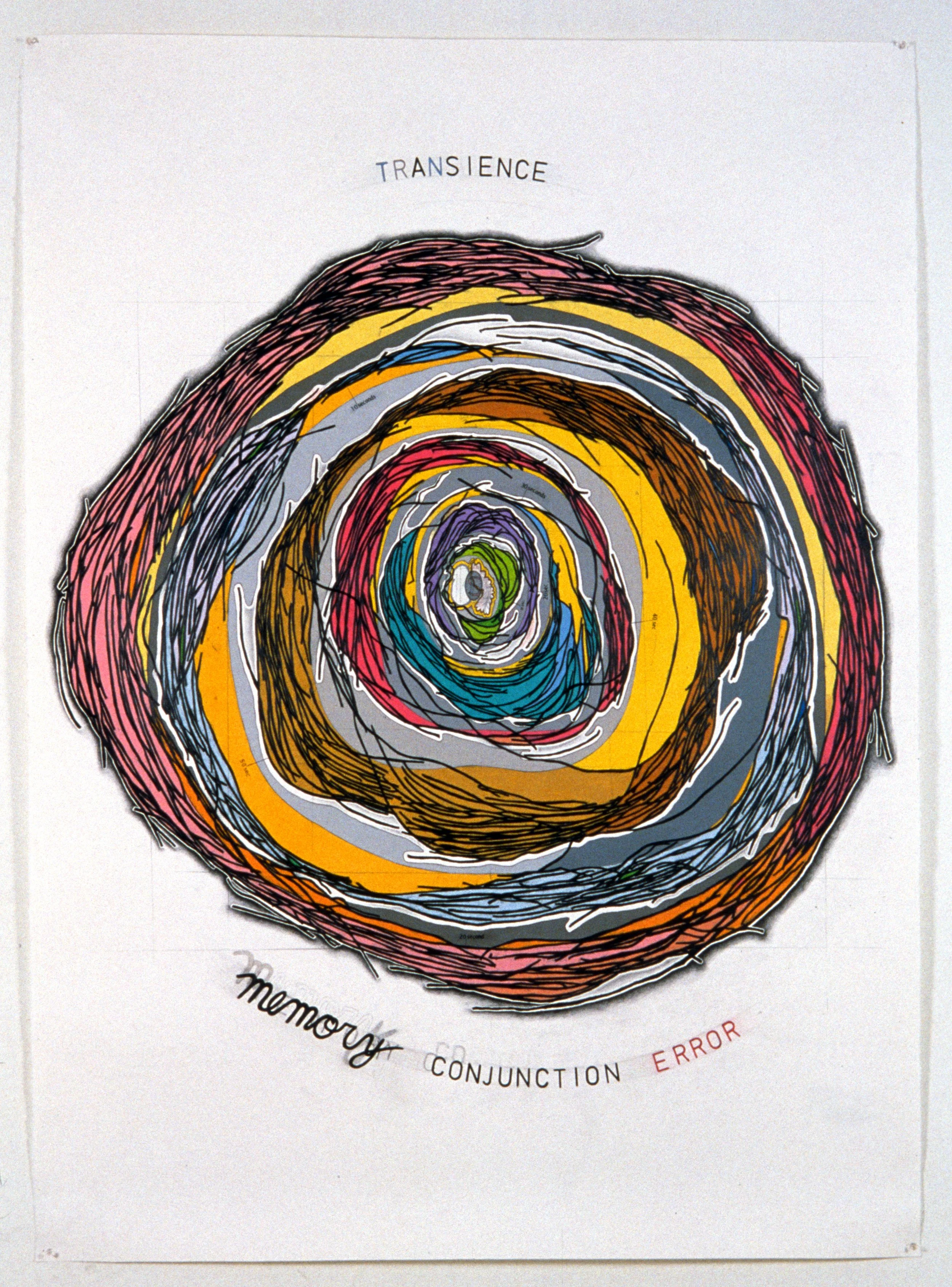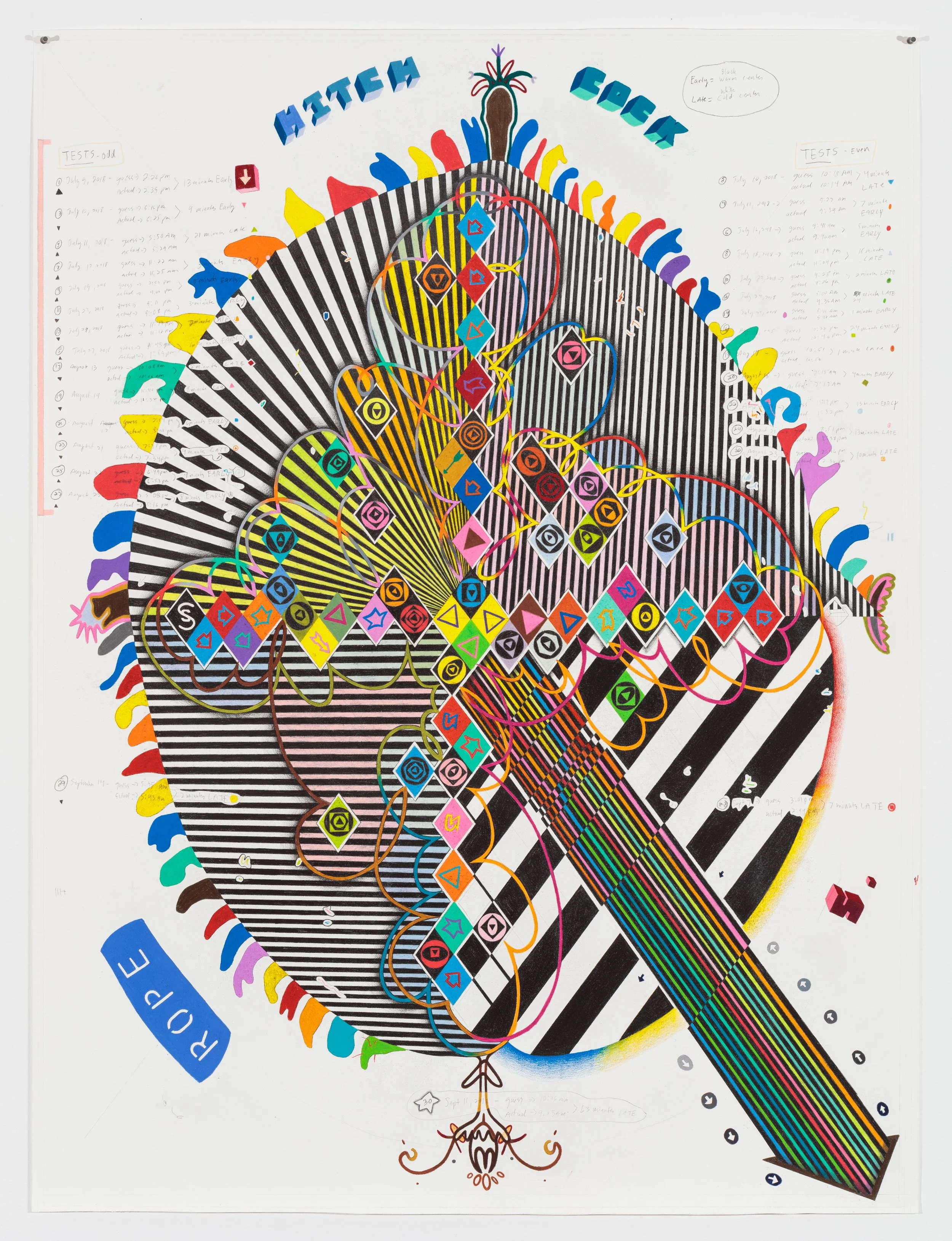
Memory Works
Memory
Below are a series of works I’ve made at different points in my career revolving around the concept of memory loss. I’m interested in the potential relationships between seemingly insignificant or even comic aspects of forgetfulness - losing your keys, forgetting a name, missing an appointment - and the all-consuming memory loss associated with the degradation of one’s personality. My works investigate the patterns that potentially bridge the two sides of this phenomena. I often test my own memory in my drawings, and incorporate notational elements of research around memory and forgetfulness. I’m particularly interested in how language changes as our memory fails us: the complexity of our word usage, which is often undetectable upon casual reading, can indicate the loss of memory before we even know it has occurred.
TranScience
64 x 56 inches, graphite and colored pencil on paper
I was inspired to make this drawing by the theories of the German 19th-century scientist Hermann Ebbinghaus. He quantified transience: His theory was that memory of random or impersonal "things" fades over time at predictable rates. I decided to test this theory on myself, visually. In the drawing, I began by drawing a small oval at the center of the paper. I then stood at arms length and studied the shape for 10 seconds. I then closed my eyes and attempted to redraw that oval on top of the original, as accurately as I could. After this step, I solidified the second “oval,” which was misshaped by thickening it with solid graphite. I then tried to remember that second shape for 20 seconds, and drew it 2 times. This process continued and grew in complexity, until the final form mutated exponentially.
After this phase of the drawing, I colored large “sections” in with different colors, trying to highlight what looked like clusters of growth. I saw this like a tree ring, where the patterns of circular lines indicate time and growth. I was excited that this process of memory loss grew and expanded, inverting the process and rendering the entire sequence visible at once.
Ebbinghaus Map
72 x 65 inches, graphite and colored pencil on paper
I was inspired to make this drawing by the theories of the German 19th-century scientist Hermann Ebbinghaus. He quantified transience. His theory was that memory of random or impersonal "things" fades over time at predictable rates. I decided to test this theory on myself, visually. In the drawing, I began with an all-over, numbered grid. Using sets of lottery numbers applied to the grid, I created an initial shape. I then tried to test my memory of this chance-derived form. To do this, I stood at arms’ length, closed my eyes, and attempted to redraw the shape, section by section. This process eventually resulted in the final, more complex form. The patterns and information included in and around the form reflect the history of the drawing in addition to my conceptual and aesthetic decision-making.
Hitchcock’s Rope
48.75 x 36.75 inches, colored pencil and graphite on paper
In this drawing, I was interested in exploring my personal sense of time, and how it relates to ‘real’ time. I was thinking about how Hitchcock played with our perceptions of time in Rope. In this film, the skyline light fades more quickly than in real life but, as viewers, we attribute real time to the coming of night. We therefore experience time as passing more slowly that it does in the film. The concept of ‘mind time’ has always fascinated me - how we sense when to wake up, how we unconsciously read the visual stimuli around us as temporal context, how the physical world affects our sense of what time it is. I’ve also been long interested in self experimentation, so for this drawing I decided to test my own perceptions of time: At various points over the course of several weeks, I attempted to guess the ‘correct’ time. I then noted this guess in the drawing and compared it against the actual time of my studio clock. I used the difference – the time error – to mark points on a grid I had drawn over much of the paper – minutes off of the real time translated into spaces between colored diamonds. My timed guesses and resulting differences are noted around the drawing. If I guessed before or after the actual time, I made a pattern on the grid (the concentric circles and shapes) in a warm or cool color. I continued this in a clockwise motion from the center outward, until the shapes began to intersect with the noted times. I then connected these patterns and developed the form more fully. The movements of the external shapes and arrows are counterclockwise. The whole piece is a time machine based on my temporal fallibility.



